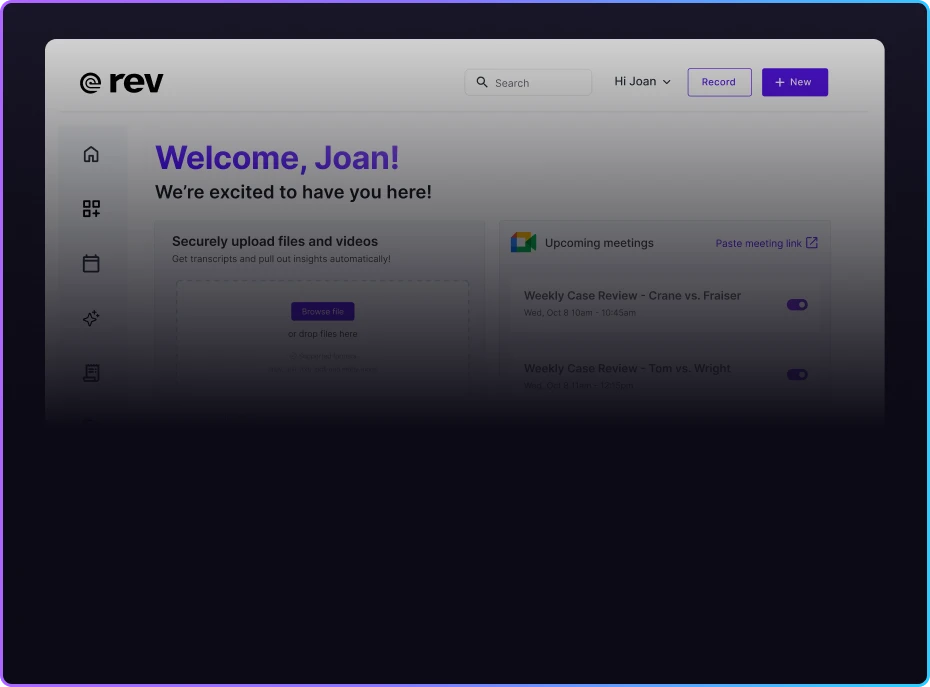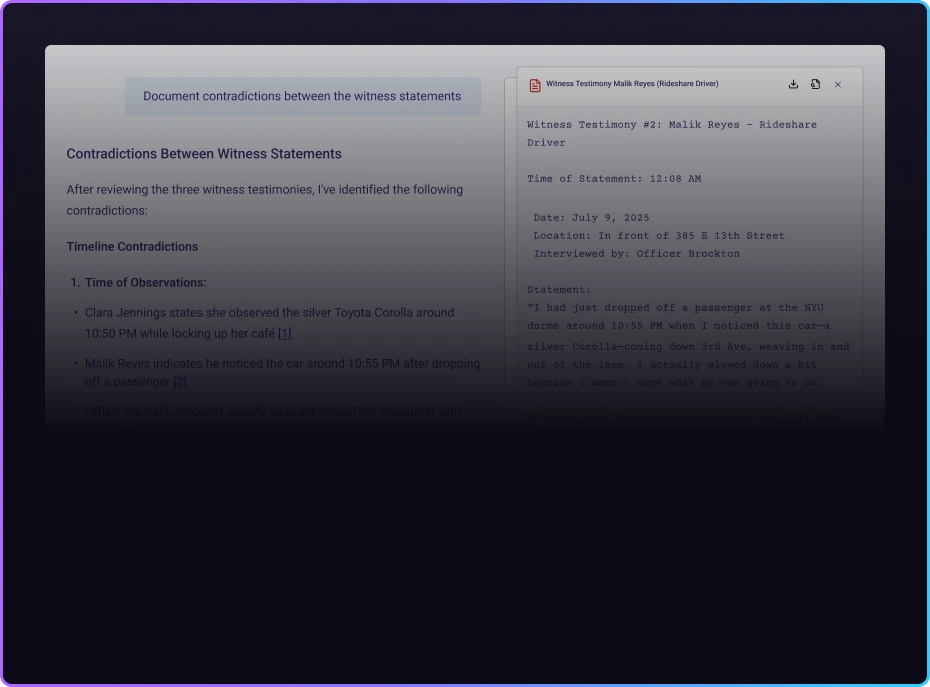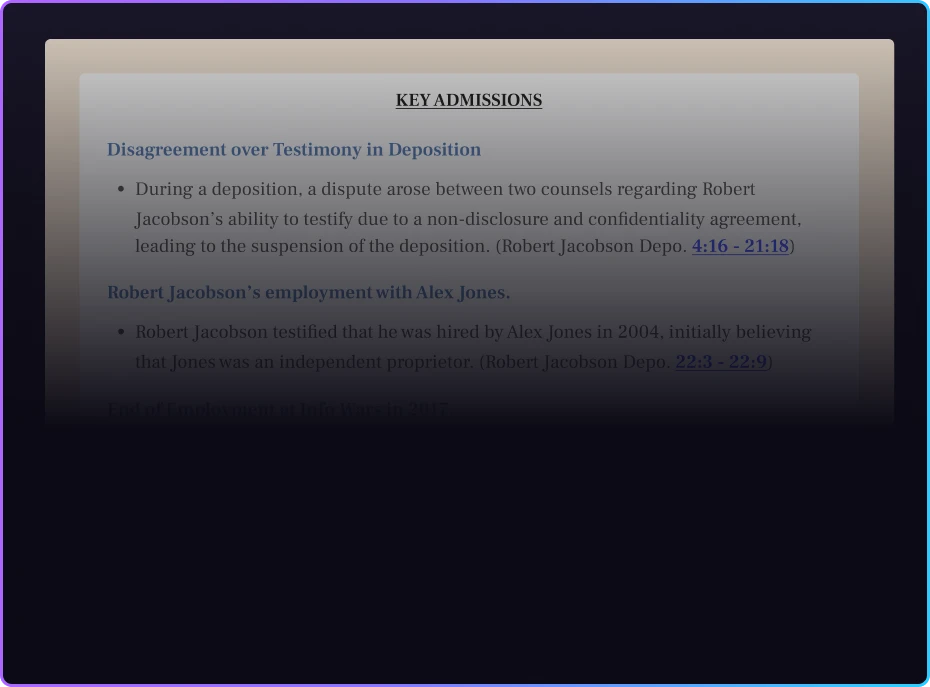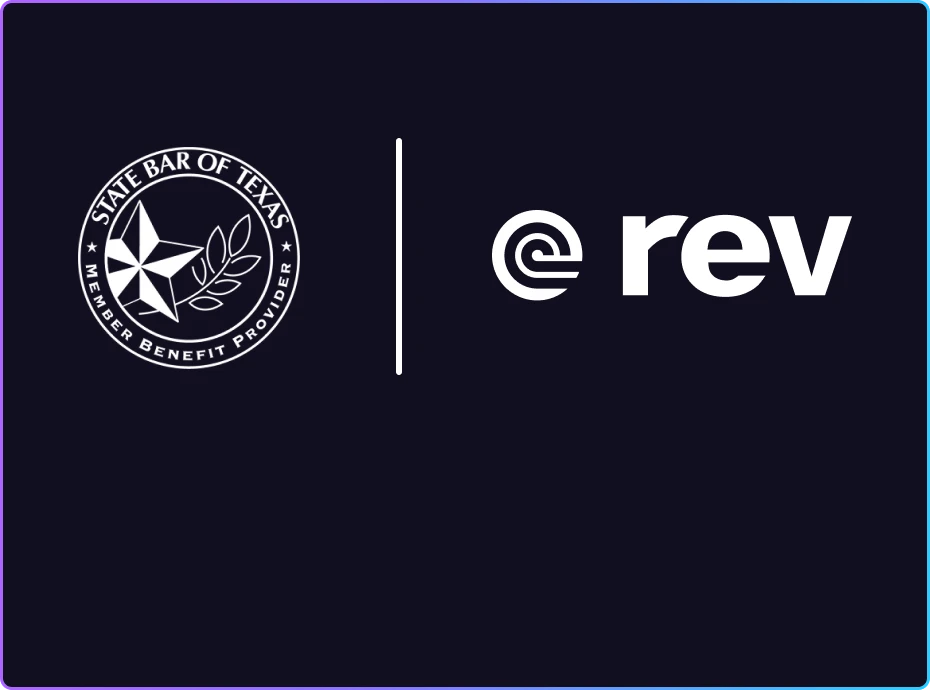Sean Duffy (00:06):
Good afternoon, everybody. I'm here with the Deputy Administrator of the FAA, Chris Rocheleau. We want to give you an update on what's been going on at the Newark Airport, what advancements have been made, the state of play as it exists right now. But before we do that, just as many of you have reported, we have an antiquated, an old air traffic control system, anywhere from 25, 35, 40 years old in some places. It is in desperate need of a brand new build, which I'll talk about in a little bit.
(00:42)
In addition, we're 3000 air traffic controllers short helping control our skies. But going to Newark, obviously it's gotten a lot of attention. There's been a lot of disruption there. So I want to just give a brief history of what took place. On April 28th there was a 32nd telecom outage. So we lost radar and we lost telecom. And then there was on top of that, a 62nd reboot of the scopes of the radar. So for radar, it was a total of 90 seconds and it was 30 seconds total time for telecom.
(01:21)
The same thing happened on May 9th. Again, a 32nd outage, scopes rebooted, and that added another minute onto the timeframe in which we didn't have scopes or radar at the Philly TRACON controlling Newark. We found that there was a problem, a glitch within our system at the Philly TRACON. We deployed a software update that actually fixed the glitch and so on May 11th, the main line… Those two lines are redundant. The main line went down and the backup line actually fired. It worked. So our fix to the glitch actually worked. Out of an abundance of caution the Philly TRACON shut down traffic at Newark for a short period of time, just out of an abundance of caution.
(02:15)
And then on May 20th, there was a two second, we called it a radio outage, but it was static on the line, so it wasn't a complete failure of the line, but there was static for two seconds. We had been working with Verizon. They have one of the lines that we're using. They've worked harden that line. It's been working as we would anticipate, even though it is not brand new, it's the existing line has been functioning as anticipated. And so I wanted to talk about what's happening at Newark. There's three issues.
(02:46)
One, we have a runway that's under construction. Two, we've had a telecom issue, and three, we have a staffing issue with air traffic controllers. So number one, in regard to the runway, the Port Authority has done an amazing job. They were working seven days a week, 16 to 18 hours a day to finish this runway. The concrete has been laid. I think they are just striping right now. We have a target date of June 15th of bringing the runway online. I think if all goes well, we may be able to beat the June 15th date of bringing the runway online.
(03:29)
In regard to telecom, so we've been at this for 30 days since the first outage. Verizon has laid a brand new fiber line between Philadelphia and New York. That was the troubled portion of the line. That's been laid. We're doing some of the connections right now, and then we have to test it. I don't want to over promise and under deliver, but if everything goes well and there can be problems when you test the line, but if it all goes well, we should be able to turn over to this new fiber line at the start of July. After that, we're going to work on the second line that goes from New York to Newark.
(04:08)
We haven't had issues with that line, but one of the lines is still copper. We're going to put a new fiber line in, but the main issue, Philly to New York, the problem line in 30 days, that fiber was laid and we should be able to flip over to that in short order. I want to quickly talk about the staffing issues that we have. I'm going to probably give you too many numbers, but I'm going to do it anyway.
(04:36)
So work in the Philly TRACON. We have 27 people. Of the 27 people, 22 are certified controllers and 5 are supervisors. So of the 22 certified controllers, 5 of them have taken trauma leave and one of them is on a medical leave. So out of the 22, you take 6 away, we have 16 controllers working the Philly TRACON. However, in training right now we have 16 controllers in training.
(05:06)
Now to be clear, these 16, they're not 16 that just came out of the academy. These were controllers that in other airspaces have been certified. They've moved to the Philly TRACON and it takes them time to get certified on that airspace. And so we anticipate in the coming months, it's on a rolling basis, these controllers in training are going to get certified and we're going to be able to add controllers back into the system in Philadelphia.
(05:35)
I think it's important to know there's a lot of questions about full staffing of controllers versus how many we have right now. We have three or four controllers working in the TRACON at a time. So let me just briefly talk about that. As Chris will tell you, safety is the priority, and if we don't feel something is safe, we'll stop or we will slow things down.
(06:02)
So on average in Newark, they're running about 50, 54 flights an hour for departures. We've brought that down. Right now departures are at 28 an hour. When the new runway comes online, June 15th, we're going to bump that from 28 to 34. It's going to stay that way until October until we bring these controllers up to speed and add them to the airspace. And when that happens, we'll do another evaluation and see how much, if any, we can increase those numbers.
(06:42)
But we have enough controllers working the Philly TRACON to control the airspace with a limited amount of traffic that we've got the airlines to agree to. So some have asked, is the airspace safe? Is it space to travel by airplane? And the answer to that is absolutely yes, of course, it is because we've slowed things down. And as we again, finish the runway and as we train up more controllers, we'll do another evaluation on how we can increase those departures out of Newark when we feel it's appropriate. And so that's the state of play in Newark right now.
(07:21)
And before I turn it over to the acting administrator, I think this truly is a moment to look at what kind of system we're using, what kind of equipment we use, what kind of telecom we use, and it's a call to action to make sure we build a brand new air traffic control system. Now you saw how fast Verizon worked with us to lay this fiber line. That's just an example of what's going to happen should the Congress give us the money to do this brand new build.
(07:51)
And by the way, it's a nationwide planning. We have systems all over the country, but we need the Congress to act. I want to thank the house. They put 12.5 billion into the big beautiful bill that's going to go towards this infrastructure project. That won't be enough. I know the senate's going to look, can they find money to put in to this build, but we are going to need them to fully fund this project, number one. And number two, they got to clear the permitting process for us.
(08:23)
If we have to go through a laborious permitting process, it's going to add years on and adding years on a system that's already showing its age is unacceptable. And so I hope that the Congress is going to do their work, find the resources to help us start this project. We have the plan. We're letting it get pressure tested by industry right now, giving us their feedback on the plan. But when they send the money, we are going to be ready to go on day one.
(08:52)
And so I think most senators and house members understand that they're trying to look for a vehicle to do this for us. But this is probably the most… Not probably, this is the most critical infrastructure project that this country has at this moment. And I do want to take a second and thank President Trump. His leadership here has been remarkable. As I've mentioned to many of you in the past, he cares about the airspace, he wants it to be built brand new. And so it's been a rare moment in time where we've seen the failures of the system.
(09:26)
We have a congress that understands it, and we have a president who's leaning into it with us. And we have American companies, corporations that are willing to put the FAA not at the bottom of their list, but put the FAA work at the top of their list to make sure this project gets done in an incredibly quick fashion. And so that's where we're at. I want to turn it over to the acting administrator to fill in the gaps that I might've missed, but we had a fairly good Memorial Day weekend in travel, especially in the airspace. I want to have him talk about that and a few other issues that have come up. Chris Rocheleau.
Chris Rocheleau (10:08):
Thank you, Mr. Speaker. So let me start on right where the secretary kind of touched on a couple of times, which is the system remains incredibly safe. We had an amazing Memorial Day weekend travel season. I would say that it was record-breaking for a Memorial Day. We had approximately 230,000 operations in the system. So related to that, there was less than 1% of cancellations through that holiday season and less than 3% of delays.
(10:44)
So the system is working. As the secretary talks about what we're doing here in managing that and working closely with the airlines and the airports is to ensure less disruptions in the system by operating closely with the airlines to understand what the system can handle safely. So a lot of work goes into that in advance of the holiday where we work with the airlines, we work at the airports to make sure that they're managing that traffic, that they're scheduling the proper amounts, and then working with our controllers, with our staff.
(11:14)
And a special shout out to the controllers that worked that holiday weekend. They did a phenomenal job in making sure that delays and disruptions were minimized to the traveling public. So again, I think what's really important is we look through a record-breaking holiday season as well as probably the third, I believe it's the third-highest travel day we had this year, 2025. And we look at the reduction in cancellations and the reduction in the disruptions the delays, we see really where the system is working as we talk about additional controllers and we manage air traffic as it relates to the weather and the like.
(12:00)
So again, I would just close by saying that we will continue to work with the airlines, with the airports to make sure that as we manage traffic, we do so safely and efficiently throughout the system. The last thing I would mention as it relates directly to Newark is sincere appreciation goes to the airlines that work with us in the delay reduction task force to make sure that we could manage traffic at Newark this holiday weekend in such an efficient manner. So thank you.
Sean Duffy (12:31):
And I just want to take a moment and also thank the FAA and Administrator Rocheleau. They have done a wonderful job standing up and working together to help us think through how we resolve these issues and how we develop a plan to actually make American airspace the best in the world with the most updated, greatest technology. And so with that, if you guys have any questions for us, we're happy to take them. Yes.
Speaker 3 (13:01):
I believe in the press conference a couple of weeks ago, you had talked about the new fiber optic lines. And at the time, I think you were saying you were hoping those could be live by the end of May. Was there something that happened to delay that to July?
Sean Duffy (13:15):
So what happened was, again, we laid fiber from Philly or Verizon did from Philly to New York. If you think about land fiber, that happened in record time. And so then on top of that, we want to make sure that it's tested. And so we're going to go through a laborious process on testing to make sure when we flip it over, we don't have any disruption. And so the FAA is going to use an abundance of caution, and I think that's appropriate, which is why we're going to go back to the end of June, early July if it all goes well. So it is the testing part of this. The lines are in, we're testing. Yeah.
Speaker 4 (13:59):
I've spoken to pilots who now are having these lost communication issues top of mind, and they're going back and dusting off the books on the procedures and the redundancies. How troubling is it to you that they're having to go back to these old ways because of air traffic control system that's frail?
Sean Duffy (14:22):
Well, I'll take the first crack at that. But again, I think they should dust up on all policies and procedures that keep their passengers and themselves safe in the air. And outages have happened. It is getting more tension right now, but the Philly TRACON for Newark had multiple outages last year. It's gotten more attention now, but again, I think it's appropriate that they do dust up If there are outages, they need to know how to handle it. What are the procedures, what are the redundancies that they need to follow to make sure they stay safe?
(14:58)
And again, this is a safe system and there's redundancies. But again, I'm concerned that we could have more of Newarks, and again, why it's so important that we actually begin this build with the money that Congress is going to send us. But again, pilots, they should be aware of all the policies and procedures while in the air to keep themselves and their passengers safe.
Speaker 4 (15:23):
Is that a commentary on the safety of the system?
Sean Duffy (15:25):
What's that?
Speaker 4 (15:25):
Is that a commentary on the safety of the system [inaudible 00:15:28] fall back on that?
Sean Duffy (15:28):
Well, I think it's a reality, right? We're dealing with the reality of Newark. The reality that the last administration moved the new work airspace from N90 down to the Philly TRACON, and these lines were not built. They didn't use fiber. And now we're dealing with that today in real time. And so yeah, we have to look at the real world around us and some of the issues that come up and make sure we are brushed up and ready to go should there be a brief outage.
(16:00)
And again, there's a lot of redundancy and a lot of procedures that keep people safe should this happen, which is what happened the two times that the system went down for 30 seconds in Newark on the telecom front at least. Yeah.
Speaker 5 (16:15):
You mentioned those outages last year. Air traffic controllers say they raised concerns about the stability of the system back then and that the FAA did not take their concerns as seriously as it obviously is now. Do you know if that message got through to the FAA? And if so, why? There wasn't more of a reaction back then?
Sean Duffy (16:33):
I'll turn it over to Chris. I'd just say we got here at the end of January. I wasn't here and Chris wasn't there. So I don't know what was done at the previous FAA, but we almost in very short order after the DCA air crash, we started working on the plan that we rolled out a couple of weeks ago knowing that this complete build had to be done. And so I can't speak to the last administration. I don't know if you have any information on that or…
Chris Rocheleau (17:04):
I would just echo what the secretary said. Clearly something wasn't going right when we experienced these outage. Right now, part of this effort, part of this initiative is to ensure we're acting with decisiveness, with focus to make sure the lines get in, to make sure those redundancies are put in, to make sure the controllers have the tools they need to make the system safe to operate safely itself. So what happened in the past, we've focused on what we are dealing with right now to make sure that we continue to operate the system safely.
Sean Duffy (17:40):
I would note that the FENS contract, which in part is to build out the fiber telecom, that contract… So you'll see what the system is right now with copper wires. That contract was not over the course of one year or five years. It was over the course of 15 years. The last administration signed a 15-year contract to upgrade the telecom. We need it now. It shows how there was not a focus on the true issues that the FAA was facing. And again, we now see it and we are not going to pass the buck. We're actually going to fix it. We're going to do the work to make sure that we do have a state-of-the-art air traffic control system.
(18:22)
But this should not be a surprise to anybody from the last administration. Watchdog groups have even told them multiple times, "You have a real issue with your air traffic control system, fix it." Outages in Newark. They probably should have hardened those lines laid fiber before they moved the Newark airspace to Philly. Those things weren't done, but that's looking back, we're looking forward, and talking about what's necessary to fix it.
(18:50)
And again, I'm proud of the partnership from Verizon that they've laid that line as quickly as they have. The port authority working as hard as they have seven days a week to make sure that runway is completed, not just on time, but I don't over promise for them, but I think it's going to be done ahead of time. Really important. And so we're taking this challenge on full-heartedly, and again, we're going to do our part to deliver. We need Congress to do their part to help us to deliver for the American people. [inaudible 00:19:20], yes. Neither one of you can go.
Speaker 6 (19:25):
As we move later into the summer months, are travelers being asked to take other airports besides Newark to try to lighten some of that load at Newark?
Sean Duffy (19:34):
That's a great question. So no, the number of flights with the delayed reduction agreement that we got with the airlines at Newark is a flight capacity that the airport can handle with the number of controllers that we have. So what you were seeing before was a number of delays in cancellations at 28 an hour, it's going to go to 34 an hour when the new runway comes online. That is a number of flights that air traffic control can handle.
(20:08)
And so if you book, I think you're going to fly in Newark. You're not going to see what you saw a couple of weeks ago. So I would say no, you don't go to another airport. If you book at Newark, you most likely going to fly at Newark. Those problems because we've slowed down the number of departures an hour is now a number that is manageable.
Speaker 7 (20:33):
I know you guys have said that you are looking at other airports to see where some other issues might have been. Obviously, we've seen an issue in Colorado. Is the Verizon partnership something that we could also see sooner rather than later in somewhere like Colorado or these other areas that you're looking that might have these similar issues?
Sean Duffy (20:53):
So there's not one telecom company that controls the whole country. So what you'll see is I think virtually every telecom company have some part of the build that we're going to undertake when the Congress sends us the money. So you're going to see AT&T and Lumen and the smaller providers are all going to be involved. I'm just commenting Verizon was fantastic and how quickly they moved to make sure this line that was having issues was put in and ready to stand up and be tested. We'll do two more.
Speaker 5 (21:31):
Okay. During the first Trump administration, I believe there was a proposal to do a privatization of air traffic control. And this time seems like it was a very different push to just improve the system we already have. Why the shift in direction there?
Sean Duffy (21:46):
So I look at the issue at play and the issue is the whole system. And you saw 55 different groups come and support our proposal, groups that are oftentimes on different sides of the table. Privatization is a fight that someone can have if they want at some other point. I don't want to divide people. I think working for the American people is to say we are going to build an air traffic control system that truly is state of the art, that is the best in the world. And to have a fight about privatization is just going to divide people. And what that'll actually do is make sure that we don't actually build a brand new air traffic control system.
(22:28)
That's a guarantee that political fights will take a priority over the great infrastructure bill that has to happen in this country. And so I'm not interested in political fights. I'm interested in doing what's right by way of the American people, the flying public. And that means keep everybody together, build this brand new system, make sure we can have more capacity in the airspace.
(22:49)
By the way, you got to think about we are going to have eVTOLs or drones, Ubers in the air. We're going to have drones in the airspace. So the airspace is going to become more complicated and we need to build a system that can take on that complication, that additional use and probably more flights in the airspace as well. What we have now, I don't think can accommodate that. And so thinking over the horizon to the future, what we're going to build can accommodate far more uses of the airspace as this technology develops. Yeah,
Speaker 4 (23:21):
You guys were specific about what you want in a brand new ATC system, but I feel like I've still not heard a number for what you're asking from Congress. You have, is it 30 billion? Is it 40 billion? Do we know yet?
Sean Duffy (23:33):
So that's a good question, which I think you've asked me that before. And so I'm not given a number. It's going to be tens of billions of dollars. It's a partnership with Congress, right? And Congress, I was there for nine years. They do a dance the way that Congress dances and how they find pathways to fund bills is in the purview of the Congress. And so I'm having conversations with them at a private level about what I think it could be. But I want them to actually pressure test our number and I want to work with them on what they think the number is, what I think the number is, what Chris thinks the number is, and then the pathways in which we can get that money.
(24:15)
So the 12.5 billion that we have in the House bill, it's going to be more than that. And you just think about this. Think we are going to in essence gut the air traffic control system and build it brand new, everything. And we're going to lay all new telecom, new radar, new radios, new front facing, and the back end of the system all will be brand new. It's all across the country.
(24:49)
So it's a substantial piece of work and we'll take a substantial amount of money. And by the way, I don't think there's any… There's a lot of debates on right now about budgets and money and spending and cutting. And again, I'm a fiscal conservative, but the economy, a massive part of it comes from our air traffic control system. I mean, whether you're moving cargo or general aviation or the flights that people fly on from point A to point B, it's a huge part of our economy and making sure that this works and works well is I think a net benefit for the economy.
(25:26)
It probably is a generator of revenue, not a loss. And so I think they all agree that we need it. They all agree that we should have it. They all don't agree on how we're going to do it and maybe what the number is. And so again, I look forward to continuing to work with them as we go through the process. But we've done our work, we have the plan, we are ready to go. We just need the Congress to step up and do the two things.
(26:01)
Again, the Congress has given the FAA partial funding. They don't give them the full amount and they get partial projects. It takes way too long. And again, the technology changes, the priorities change. We need it all up front is that's a big ask for the Congress to give us the money all up front. That is necessary if we're going to be successful at this project. And again, you can't make us go through years of permits for laying new fiber. We need it now.
(26:30)
And I think Democrats and Republicans are going to agree that yes, with certain guardrails around giving you relief on permitting and giving you the money up front with those guardrails, I think they're going to buy into that idea. It's just they got to figure out how they're going to do it, which maybe is why I left Congress. It's going to be interesting to see how they can do it. With that, listen, thank you all for coming. We appreciate it and we'll keep you updated as we get new developments. Thank you.
Speaker 8 (26:57):
Thank you.









